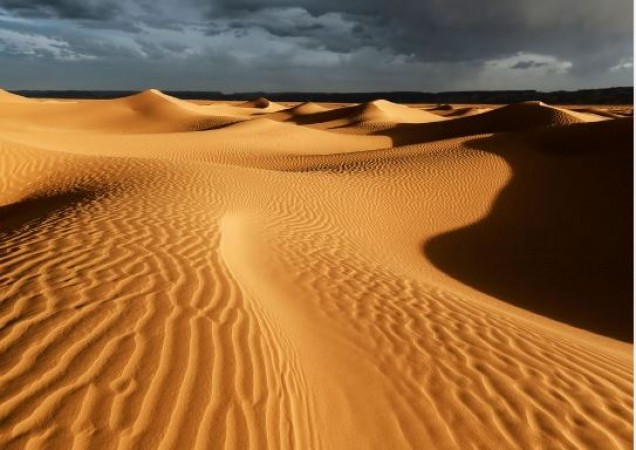
The Sahara Desert, known for its vast expanse of arid land, scorching temperatures, and towering sand dunes, was not always the barren landscape we see today. In fact, thousands of years ago, the Sahara was a lush, green region teeming with life. This remarkable transformation from a green oasis to a vast desert has fascinated scientists and historians for decades. Let's embark on a journey through time to understand how the Sahara Desert became the parched wilderness we know today.
### The Pleistocene Epoch
During the Pleistocene epoch, which spanned from about 2.6 million to 11,700 years ago, the Sahara Desert was far from the arid wasteland we see today. Instead, it was a fertile region characterized by lakes, rivers, and abundant vegetation. The climate was considerably wetter, and the Sahara supported diverse flora and fauna, including early human populations.
### The African Humid Period
At the peak of its green phase, approximately 10,000 years ago, the Sahara experienced what scientists refer to as the "African Humid Period." During this time, monsoonal rains from the African monsoon extended deep into the Sahara, nourishing the land and creating a verdant landscape. The presence of numerous prehistoric rock art sites in the Sahara attests to the existence of a thriving human culture during this period.
### Orbital Forcing
The transformation of the Sahara into a desert can be attributed, in part, to changes in Earth's orbital parameters. These changes influenced the distribution of solar radiation, impacting the monsoon systems that brought rain to the region. Over time, shifts in the Earth's orbit led to a weakening of the African monsoon, causing the Sahara to gradually dry up.
### Human Impact
While natural factors played a significant role, human activities also contributed to the desertification of the Sahara. As the climate became drier, early human populations were forced to adapt. Some turned to pastoralism, while others practiced agriculture. Over time, increased agricultural activity may have led to soil degradation and deforestation, exacerbating the desertification process.
### Current Climate Conditions
Today, the Sahara Desert is one of the harshest environments on Earth. It covers approximately 3.6 million square miles and is characterized by extreme temperatures, minimal vegetation, and vast stretches of sand dunes. Rainfall is sporadic and insufficient to sustain most plant and animal life.
### Climate Change and Future Projections
While the Sahara's transformation is largely a result of natural processes, contemporary climate change poses additional challenges. Rising global temperatures and altered weather patterns could further expand the desert's boundaries, impacting not only the Sahara's inhabitants but also neighboring regions.
### Environmental Restoration Efforts
Despite the challenges, there is hope for rehabilitating parts of the Sahara. Various initiatives are underway to combat desertification, such as reforestation projects, water management strategies, and sustainable farming practices. These efforts aim to revitalize the land and improve living conditions for local communities.
### Lessons for the Future
The story of the Sahara's transformation serves as a poignant reminder of the Earth's ever-changing climate. It underscores the delicate balance between natural forces and human activities. By studying the history of the Sahara, scientists gain valuable insights into how ecosystems can adapt and the importance of sustainable practices to mitigate the impact of climate change.
In conclusion, the Sahara Desert's journey from a green paradise to a barren wasteland is a testament to the Earth's dynamic nature. While climate shifts and natural processes played a significant role, human actions have also left their mark on this iconic desert. As we confront the challenges of a changing climate, the lessons learned from the Sahara's history can guide our efforts to preserve and protect the planet for future generations.
5 Strategies to Extend the Shelf Life of Your Tomatoes
Tips for Extending the Shelf Life of Avocados
Avoid These Foods When Consuming Milk to Reduce the Risk of Heart Attack